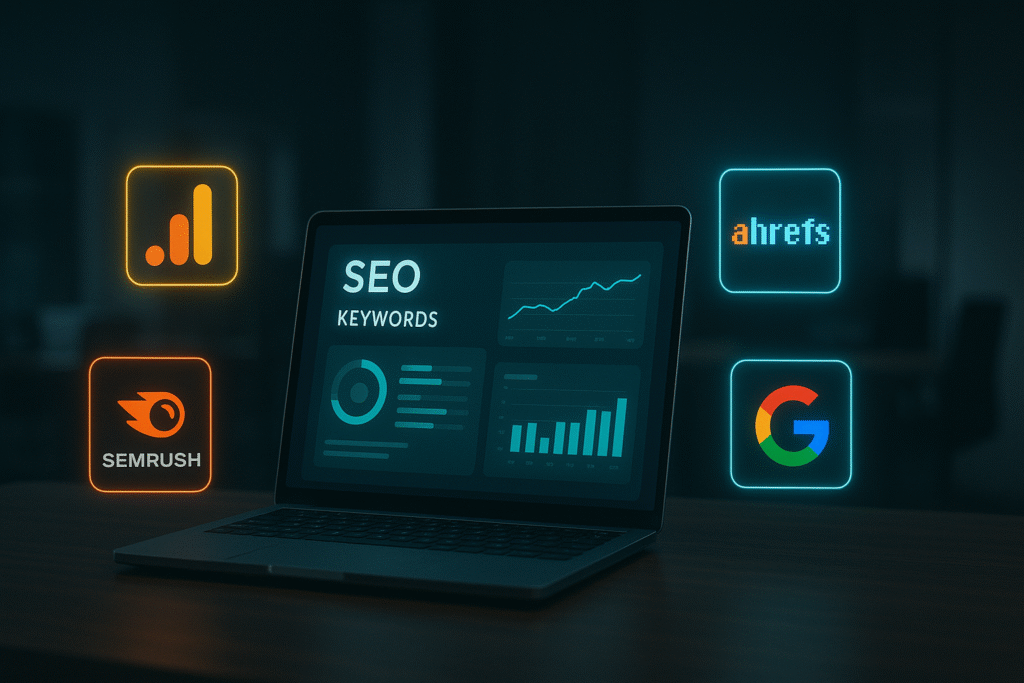When I first started building websites in the late 2010s, I thought SEO was all about stuffing in the right keywords and tweaking meta tags. You know, the old-school checklist kind of approach. But the more projects I handled—especially after working with a local startup here in New Jersey—the clearer it became: User Experience (UX) design is not just “nice to have,” it’s central to ranking well on Google.
And that realization didn’t come from reading an SEO guide. It came from watching one of our sites skyrocket after we improved navigation, reduced page clutter, and—ironically—removed a chunk of keyword-heavy text. Does that sound familiar? That “aha” moment when you realize people-first design equals better SEO.
Why UX and SEO Are Two Sides of the Same Coin
According to Wikipedia, UX design is the process of enhancing user satisfaction with a product by improving usability, accessibility, and pleasure in the interaction. Sounds clinical, right? But when you live it—when you see visitors bounce in three seconds because your mobile menu is broken—it stops being theory.
Google has been clear about one thing: if users love your site, so will its algorithm. Features like Core Web Vitals, which measure loading speed, interactivity, and layout stability, aren’t just nerd metrics. They’re proxies for how enjoyable (or frustrating) a site feels. And frustrating experiences tank rankings, period.
Personal Experience: The Local Business Case Study
Here’s a story. A small NJ roofing company I consulted for had a decent-looking site but terrible bounce rates. The homepage had so many flashing banners that it looked like Times Square in December. Customers weren’t sticking around, and worse, Google was nudging their ranking downward.
We stripped it down, redesigned the menu, added a single clear CTA, and improved the mobile view (since 70% of their traffic came from smartphones). Within three months, their organic traffic jumped by nearly 40%. The crazy part? We didn’t even touch the written content much. Just UX fixes. That’s the kind of proof that makes you believe the hype.
Key UX Elements That Directly Influence SEO
1. Site Speed
Remember waiting 10 seconds for a website to load back in 2005? Today, users won’t wait three seconds. Google’s Page Experience Update made it official: slow sites don’t rank. In my own projects, switching from shared hosting to cloud servers cut load times by half and rankings improved within weeks.
2. Mobile Friendliness
Over 63% of Google searches now come from mobile. If your buttons are too small to tap, you’re basically invisible. I once tested a restaurant site where the “Menu” button literally disappeared under the logo on iPhones. No wonder their bounce rate was over 80%.
3. Navigation and Structure
A confusing menu is like a mall with no signs. People leave. And when people leave, your SEO suffers. I’ve found that using breadcrumbs, logical categories, and a sticky navigation bar often keeps users around longer—and longer session durations correlate with better rankings.
4. Readability
Does your text look like an academic paper? Huge blocks of text scare users away. Break it with H2s, H3s, bullet points, and images. When we reformatted one client’s blog into scannable sections, average time on page jumped from 45 seconds to nearly 3 minutes.
5. Trust Signals
Things like SSL certificates, testimonials, and clear contact info matter. Google is obsessed with E-E-A-T (Experience, Expertise, Authoritativeness, Trustworthiness). And users pick up on these signals unconsciously. Would you stay on a site that feels shady?
Breaking the Predictability: A Metaphor
Think of your website as a restaurant. SEO is the billboard that gets people to the door. But UX is the menu design, the friendly waiter, the speed of service. If the chairs wobble and the food arrives cold, does it matter how flashy the billboard was?
That’s how search engines think too. They’ll bring visitors to your door—but if the experience stinks, they’ll stop recommending you.
Recent Trends in UX That Affect SEO
- Dark mode optimization: People love it, but if your contrast ratios are poor, users leave.
- Voice search UX: Sites that structure content in Q&A format tend to do better with voice assistants.
- Micro-interactions: Hover effects, progress bars, and subtle animations keep users engaged longer (but beware of overdoing it).
I’ve noticed locally that many NJ startups are experimenting with minimalistic designs inspired by fintech apps—lots of white space, bold typography, and mobile-first layouts. And guess what? Many of those sites are climbing in Google rankings.
Lessons Learned (The Hard Way)
I’ll admit, I once over-engineered a client’s UX—fancy carousels, heavy animations, and custom fonts. It looked stunning on a designer’s monitor. But users hated it. The site lagged, buttons broke on Android, and rankings fell off a cliff. The lesson? Fancy doesn’t equal effective.
UX is about clarity, not decoration. And when you focus on clarity, SEO improves naturally.
So, What’s the Takeaway?
SEO without UX is like a beautifully painted car with a broken engine. You might get noticed, but you won’t go far. Every successful project I’ve worked on—whether it was a mom-and-pop store in Newark or a mid-sized SaaS platform—proved that good UX is the hidden SEO strategy no one talks about enough.
And the best part? Investing in UX isn’t just about pleasing Google. It’s about pleasing people. And people are the ones who click, buy, and come back.
Final Thoughts
If you’re serious about SEO rankings in 2025, stop obsessing only over keywords and backlinks. Start by asking: “Would I enjoy using this site myself?” Because if the answer is no, chances are, neither will Google—or your customers.
So next time you’re planning an SEO campaign, put UX at the center. After all, the algorithm is just a reflection of human behavior. And humans crave ease, trust, and clarity.
Have you seen rankings improve after fixing a UX issue? Share your story—I’d love to compare notes.

